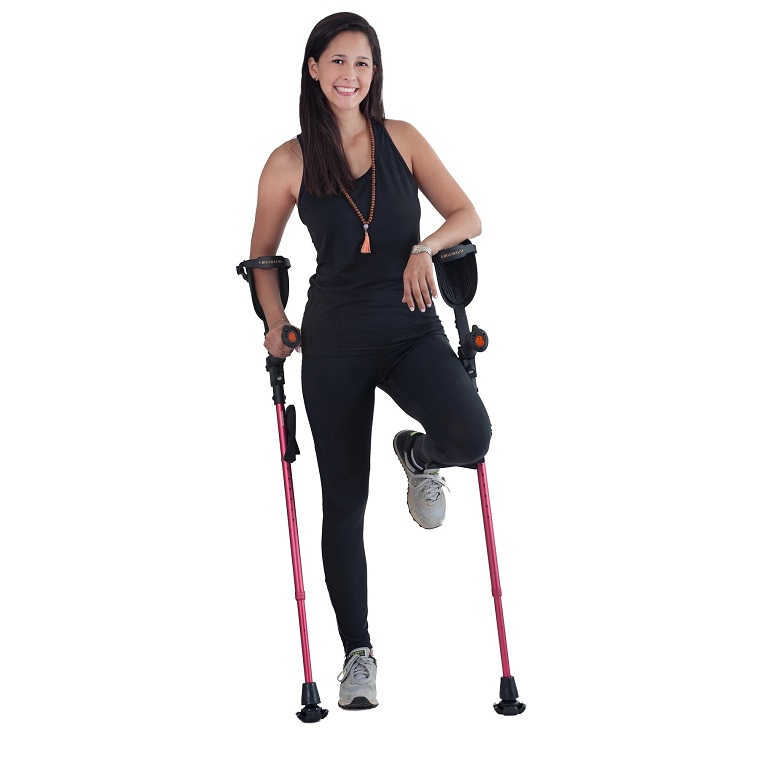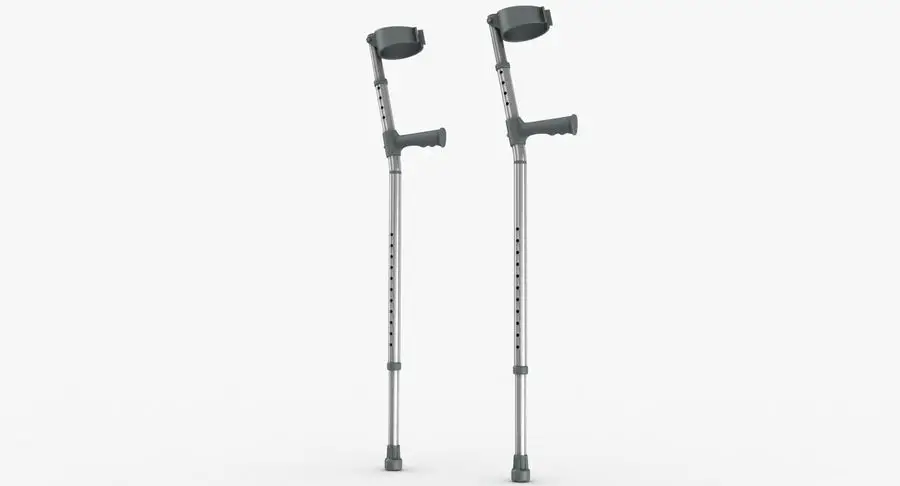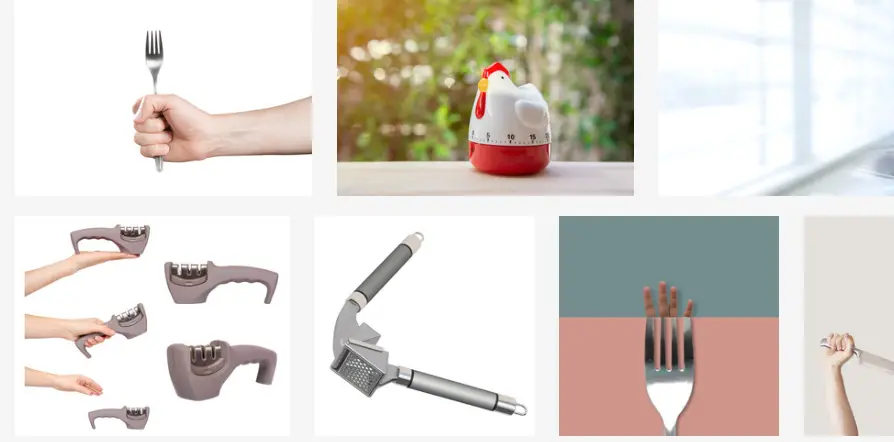Mobility aids are of great importance to handicapped persons such as leg amputees, victims of ankle injuries, and individuals who suffer leg muscle pulls.
They can be used by individuals of all ages alike, whether a young injured sportsman or an elderly person with walking difficulties.
There are several types of mobility assisting devices available for the use of disabled persons.
These range from canes to walkers, rollators, and crutches.
Devices such as these provide the necessary physical stability and support that handicapped people need to walk.
Crutches are a type of mobility aid often recommended to support walking. Below are the main variants available.
Table of Contents
Types of Crutches
The major types of crutches include the following.
Underarm crutches
These are put under the user’s arms to aid movement. They typically feature soft padding for the parts of the device that come directly under the disabled person’s armpit to prevent injuries.
Related: Walker vs. Crutches: Here’s the Right One to Choose
Platform crutches
Disabled persons who are unable to easily grasp the handle of a mobility aid can use this type. It usually has a flat platform on which users can rest their hands and have them fastened in place.
Forearm crutches
While there are many varieties of crutches today, the forearm crutch has gained increasing popularity among disabled persons. This device moves the weight of the body to the upper parts from the legs.
A forearm typically features handles, which make walking easier for handicapped people by giving them a greater deal of stability and control. These handles can be adjusted to suit the user’s height.
Forearm crutches also have forearms that are often cushioned with soft material for additional comfort to the user.
Pros of Forearm Crutches

Using forearm crutches offers numerous advantages. Here are some of them.
Related: Top 10 Places Where You Can Get Cheap Crutches
Cost-effectiveness
Forearm crutches are generally available for prices that are relatively cheap compared to other options. Moreover, when you consider the fact that they are highly durable and you can use them for the long term, you would agree that they’re indeed a great investment.
Applicability to para-sports
Today, many amputees and other disabled persons participate in sports such as football both as recreational activities and as professional careers.
Forearm crutches are best-suited for use in para-sports, as they allow for various gaits and movement patterns.
Users also have more stability and control over their movements, which contributes to good performance in sports.
Ease of use
Forearm crutches can be used with little to no special training. Users find them easier to use as their pattern of use mimics natural walking patterns more closely.
Terrain adaptability
Some types of crutches have very limited use on rough non-level ground. Forearm crutches, however, can be used in virtually all terrains and require only limited assistance on extremely difficult ground.
Portability
Some disabled people struggle with low stamina and endurance levels. It is difficult for such persons to manage heavy or bulky mobility aid devices.
Forearm crutches are relatively small and made from lighter materials.
This means that they can be carried around with less stress. Because of their small frame, they are less likely to fill up space and bother other people in public. These crutches can also be easily fit into a car for transportation.
Enhanced comfort
Forearm crutches contain features meant to enhance the user’s comfort.
Foam or other soft material cushions the handles and forearms, upon which most of the disabled person’s body weight rests, to prevent discomfort and excessive friction.
This means that handicapped people can use them for extended periods without any significant amount of discomfort.
Related: How to Walk in a Walking Boot with Crutches
Better body weight distribution
Unlike other types of crutches, forearm crutches require users to rest their weight on the device through their arms. This means that the legs are freer of the torso’s weight, allowing for faster rehabilitation in cases of leg injuries.
Furthermore, the arms feel less strained.
Gait variation
Forearm crutches allow the users to alternate their walking patterns to a greater extent. This allows them to navigate past obstacles in their path more easily.
Durability
This type of crutches generally last long and with proper maintenance, hardly have to be replaced.
Posture improvement
The use of forearm crutches encourages disabled persons to maintain a good physical posture, as this is the only way that the device can be effectively used. This may not be the case with other mobility assisting devices.
For instance, persons who use underarm crutches tend to slump their upper bodies on top of their mobility aids. This is often the case when they suffer tiredness. Eventually, such persons might suffer bodily disfigurement.
Furthermore, this may injure the nerves under their arms, leading to a condition known as crutch paralysis.
Less bodily strain
Users of forearm crutches can walk with it for extended periods without having to worry about causing strain to any part of their bodies. This is so because this device spreads the body’s weight evenly across the upper body.
In contrast to this, underarm crutches put stress on the shoulders of the user after being used for extended periods. It is less common for users of forearm crutches to feel sore from using their walking aids than for those using underarm crutches.
Increased balance
Persons using forearm crutches enjoy a greater deal of balance and stability. This is because they use both of their legs in walking and have shorter upright bars for support. Users of underarm crutches, on the other hand, have longer upright bars to walk with and typically move with only one leg.
This means they are more susceptible to falling.
Disadvantages of Forearm Crutches

Body strength requirement
The use of forearm crutches relies on the torso and arm strength. Users rest all their upper body weight upon the crutches’ handles. In cases where the disabled person lacks stamina or has an unstable arm or quaking upper body, as is the case with persons suffering from Parkinson’s disease, forearm crutches are difficult to use.
Using this type of crutches in such cases can be dangerous, as there is a possibility that the user may fall forward while walking.
Difficulty in use for stairs
Even though they give users a great deal of control over their ambulation, forearm crutches are not ideal for use in going up or down stairways.
Although experienced users may learn to use these crutches for support in climbing staircases, it is recommended to seek assistance before doing so.
Inability to hand-carry items
Some people who have difficulty walking still need to use their hands to carry items such as bags or tools as they go about their everyday work. Using forearm crutches denies them of this since their hands have to hold the items and simultaneously grasp the device’s handles while they move.
Possibility of soreness
After using forearm crutches for an extended period of time, users might begin to feel soreness in their arms and hands. This is often the case when the foam cushions on the device’s handle and forearm begin to wear out.
Be sure to get your cushions replaced once you begin to notice signs of wear and tear on them.




